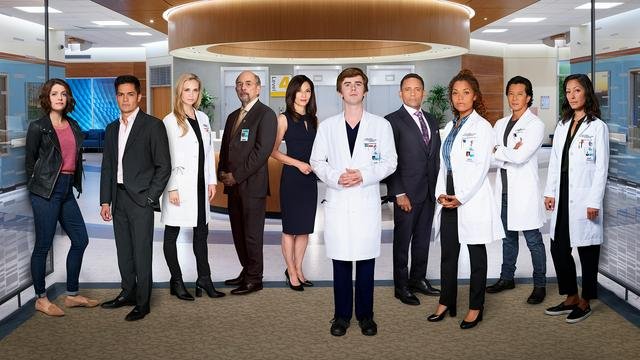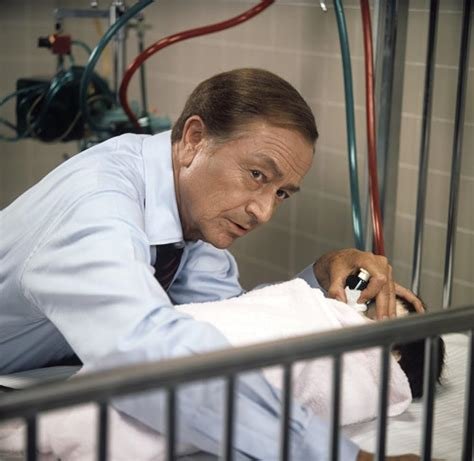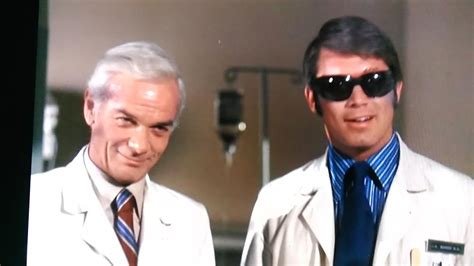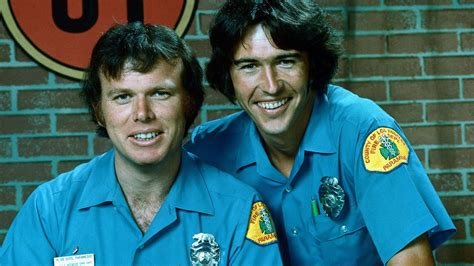State of the Shea EXTRA: Good Forefathers for “The Good Doctor” Pt. 2
Our exploration of long-running and/or otherwise significant series in medical dramas continues!
With The Good Doctor finishing with 7 seasons under its belt—putting it among the most well-known network TV programs in history— I’m doing a deeper dive into the medical drama genre, which launched on TV in the 1950s. Check this out for a reminder of why the 7 year-mark has historically been important in network TV… and also why you won’t find M*A*S*H discussed here… for it’s time to move into the ‘70s!
MARCUS WELBY, M.D.
Aired on: ABC
Seasons: 7 (1969-76)
Episodes: 170 + 2 Made-for-TV films
Just three years after Dr. Kildare and Ben Casey cleared the airwaves (again, see my previous post in this series for more about those shows), a new battle-of-the-network-medical-dramas came to life. This time the most popular doctor on TV was Marcus Welby– not a young heartthrob, but an experienced family practitioner who happened to share his private practice with relatively young heartthrob of “the now generation” Dr. Steven Kiley. (Robert Young, a.k.a. Welby, was 62 when the series started; his co-star James Brolin was 29.) The additional twist was that Welby was the one offering more unique, outside-the-box methods of treatment to Kiley’s traditional ways.
Like its early-60s predecessors, Welby took on medical topics that were new to TV at the time, including impotence, mononucleosis, rape, Alzheimer's disease, and sexually transmitted diseases (a topic that NBC had refused to greenlight during Dr. Kildare’s reign on prime time.)
It also took on homosexuality (in “The Other Martin Loring”),, but it did so by associating it with moral illness, much to the outrage of the Gay Activists Alliance.
You can learn about the show’s even more upsetting handling of homosexuality here, in an episode titled (ironically?) “The Outrage.”
Marcus Welby was the most-watched series in prime time in its second season (1970-71); it was the first series on ABC to do so.
Also it ran alongside both The Brady Bunch and The Partridge Family on ABC’s schedule, which might explain why Maureen McCormick, Barry Williams and David Cassidy all landed guest spots on the series while shooting their own shows.
MEDICAL CENTER
Aired on: CBS
Seasons: 7 (1969-76)
Episodes: 170
If the hyper-upbeat theme music was any indication, Medical Center looked to capture a younger demographic of viewers than its ABC competition.
Its premise– the clash between youth and experience, as represented through an older white surgeon and a younger white surgeon– was well-worn by the 1970s (Chad Everett played the heartthrob in this case; the “experienced” one was James Daly).
(The shades were not a typical part of Everett’s wardrobe in hospital scenes… he wasn’t THAT much of a hipster.)
But there was a noteworthy difference between Medical Center and other medical dramas to that point: the “medical center” itself was part of an (unnamed) university hospital… creating more situations with young people, as is demonstrated in the scene below:
This likely paved the way for future dramas that featured teaching hospitals and/or clusters of young residents (as we had with The Good Doctor, of course!).
THE BOLD ONES: THE NEW DOCTORS
Aired on: NBC
Seasons: 4 (1969-73)
Episodes: 45
You’re looking at that scant number of episodes– 45, compared to the 170 contributed by the other 1969 medical dramas I just discussed– and wondering how this one made the cut, right? I’ve got a few reasons…
Its creation is partially credited to (a quite young) Steven Bochco, who later developed megahits such as Hill Street Blues, L.A. Law, and NYPD Blue.
Set in an exclusive clinic (that stressed “new medicine” in its title) rather than a hospital, the show relied on cutting-edge techniques of the times as a foundation for material rather than youth-vs-experience personnel tropes.
It originated as part of a series of dramas (all carrying The Bold Ones umbrella title, stressing innovation in medicine, law, police enforcement, and politics respectively) that rotated weekly in the time slot. The New Doctors was, however, the only series successful enough to last four seasons. (The NBC Mystery Movie was another “wheel series” that launched a successful medical drama later in the 70s– I’ll discuss that in Part 3.)
Here, in this clip from the show’s third season, the focus was on a new serum to fight sickle-cell anemia. Aside from the chalkboards used for illustrative purposes (several decades before whiteboards and “ShaunVision”), you might note the late great Louis Gossett Jr. guest starring as developer of said serum.
EMERGENCY!
Aired on: NBC
Seasons: 6 (1972-77)
Episodes: 122 + 6 Made-for-TV films
I wasn’t sure if I should include Emergency!, which was as much a high-stakes action show as it was medical drama (with the “action” part grabbing much of the attention). But if you think about some key situations within The Good Doctor–” Season 3’s earthquake immediately springs to mind– medical rescue units were key. Bringing such rescues to life on TV, and shining a light on the role of paramedics in the process, helped make Emergency! an instant hit for NBC.
Debuting in January of 1972– only five years after the first ambulance/emergency medical service was launched in the U.S.-- the drama could hardly have been any timelier.
And with an EMS “pioneer” serving as its technical advisor, audiences soon became familiar with biophones and defibrillators– or at least the presence of them in urgent situations.
All that said, you’ll notice that despite all the gear, flashing red lights, and a theme song that sounds like it has a siren’s wail embedded into it…it’s still the hospital staff that gets top billing. It could be a real-life case of experience prevailing this time, given that Randolph Mantooth (Johnny Gage) and Kevin Tighe (Roy DeSoto) were relative newcomers while Robert Fuller, Bobby Troup, and Julie London were all veteran actors and/or musicians by the 1970s.
But with Emergency! credited with introducing much of the world to pre-hospital care, making terms like EMT (Emergency Medical Technician) and CPR (Cardiopulmonary Resuscitation) commonplace, the show's true star is easy to see.
Coming in the third EXTRA installment: a new youth vs. experience battle as the tone of medical dramas shifts significantly in the 1980s…
Like what you’re reading here? Please post a comment and let me know!











